#thylacinus cynocephalus
Explore tagged Tumblr posts
Photo
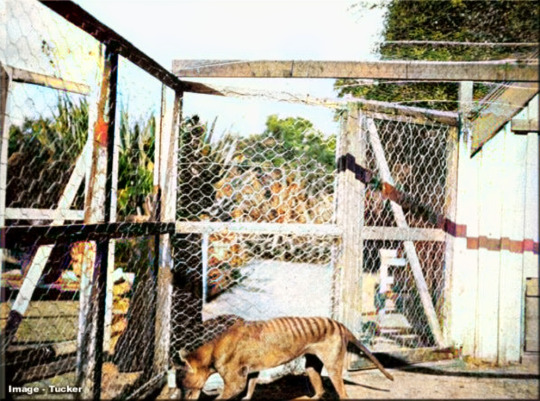

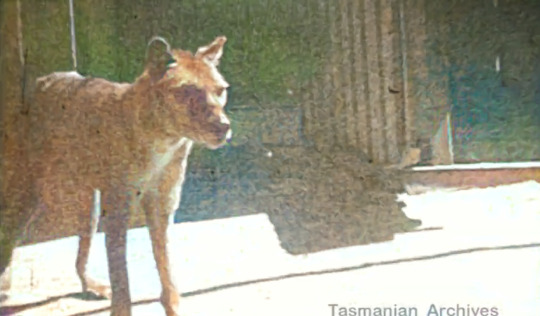
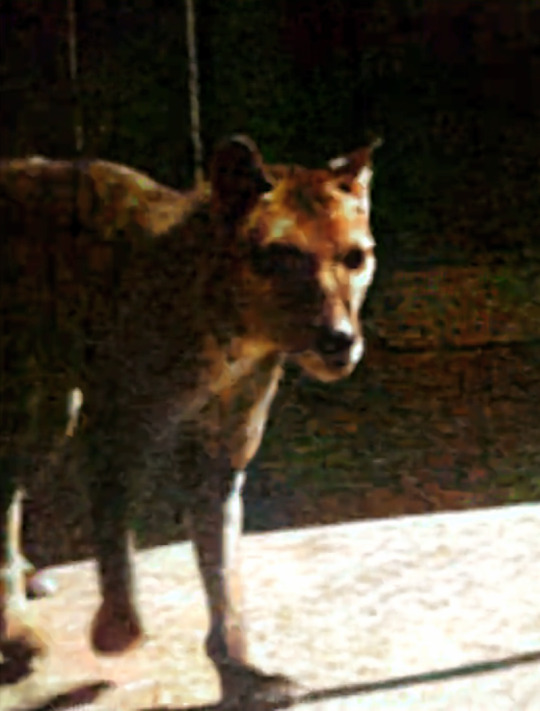
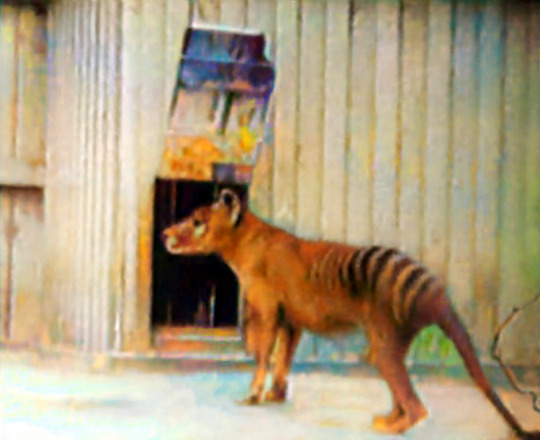
Colorized Thylacines pt. 3
#its like i ring a dinner bell each time i upload these#yall never disapoint#thanks for loving t. cynocephalus as much as i do#Thylacinus Cynocephalus#thylacine#thylacinus#Tasmanian tiger#tasmanian wolf#extinct#extinct species#historic photo
3K notes
·
View notes
Text



#poll#Class: Mammalia#Order: Dasyuromorphia#Family: Thylacinidae#Genus: Thylacinus#Thylacinus Cynocephalus
119 notes
·
View notes
Text

today's daily is: the thylacine! (thylacinus cynocephalus)
( requested by @undercover-roomba :] )
98 notes
·
View notes
Text


tattoo-esque thylacine
#joeycbang art#thylacine#tasmanian tiger#thylacinus cynocephalus#tattoo design#tattoo art#extinct species#australian megafauna#thylacinidae#marsupials#inspired by a tattoo idea my sister was talking about and i was gonna work on a potential 'real' version with her so like#dont steal this or my sister will be mad at me lol
111 notes
·
View notes
Text
Thylacine, traditional art

Thylacinus cynocephalus.
I draw sometimes, art piece made by me. I aim for anatomical accuracy and a more realistic look.
35 notes
·
View notes
Text

The Thylacine by Joseph Wolf Postcard
Animal Illustration: Designs & Collections on Zazzle
#joseph wolf#illustration#vintage illustration#animal illustration#nature illustration#wildlife illustration#postcard#postcards#postcard art#animals#marsupials#thylacinidae#thylacinus cynocephalus#thylacine#tasmanian wolf
121 notes
·
View notes
Text

kangaroo dawgggg …. Hehehe i love this video it’s so cute
29 notes
·
View notes
Text

re: today's thylacine hoax
123 notes
·
View notes
Text
Thylacine portrait on black paper
I love how they are marsupial alternative to a dog, they look familiar yet alien/different to what we're used to see.
Prints available on my Redbubble
(or DM me if you want the original)
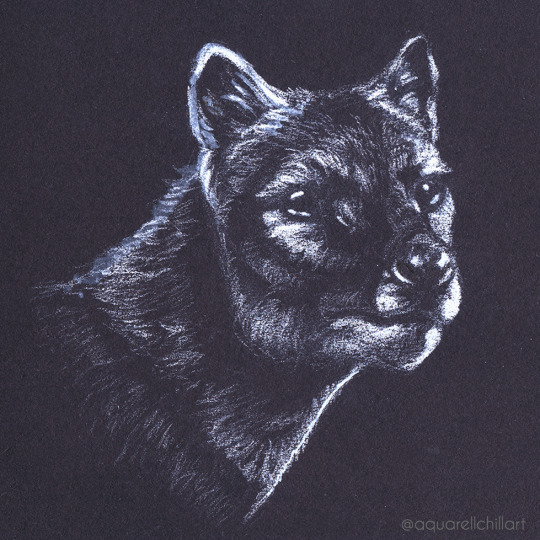
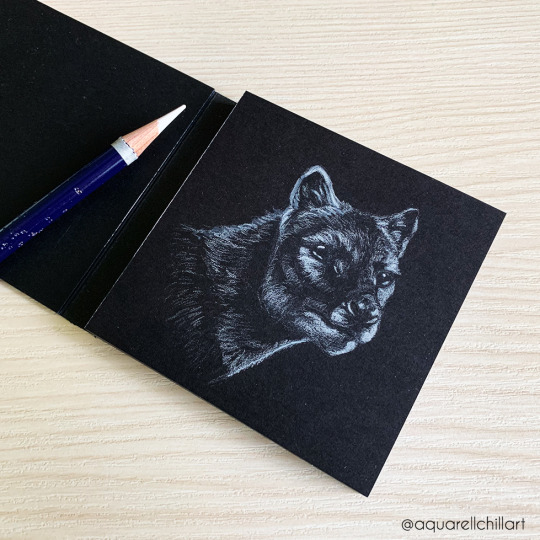
#thylacine#extinct animals#tasmanian tiger#tasmanian wolf#extinct species#thylacines#thylacinus cynocephalus#marsupial#mammal#art print#traditional drawing#black paper#my art
137 notes
·
View notes
Text
Patreon request for @/brittoniawhite (Instagram handle) - Thylacinus cynocephalus. I’ve drawn this guy already, but here’s a new pose AND a size chart, which the previous post didn’t have.

Known by several common names: the Tasmanian Tiger, Tasmanian Wolf, or simply the Thylacine, Thylacinus cynocephalus was neither canine nor feline, but instead a large carnivorous marsupial.
Being a marsupial, it had a pouch. Though it was unique in that both females and males had pouches: the males’ were used to protect their reproductive organs. Thylacine life expectancy was estimated to be between 5 and 7 years, though some captive specimens lived to 9 years. They were shy and nocturnal carnivores, likely eating other marsupials such as kangaroos, wallabies, wombats, and possums, as well as other small animals and birds, such as the similarly extinct Tasmanian Emu. However, it is a matter of dispute whether the thylacine would have been able to take on prey items as large or larger than itself. It is unknown whether they hunted alone or in small family groups, though captive thylacines did get along with each other.

Thylacinus cynocephalus was the last of the Thylacinids, a family of Dasyuromorph marsupials. It lived from the Pleistocene to the Holocene in Australia and New Guinea, driven to extinction in the 1930s by hunting, human encroachment, disease, and feral dogs. The thylacine was already extinct on the Australian mainland and New Guinea by the time British settlers arrived, with the island of Tasmania being its last stronghold. Settlers feared the marsupial would attack them and their livestock, demonizing it as a “blood drinker”, and bounties were put in place that drove the thylacine to be overhunted. As they became rarer, there was a push to capture thylacines and keep them alive in captivity, but unfortunately it was too little, too late. Conservation and animal welfare was not at the level it is today, not much was known about their behavior in the wild, and there was only one successful birth in captivity. Studies show that with continued successful breeding, a campaign to change public perception, and protections put into place much earlier, the thylacine could have been saved. But the last captive thylacine died in 1936, and official protection was not put in place until that year, 59 days before his death. Sightings continued into the 1980s, and even today some claim to see them, but all of these sightings are unconfirmed and unlikely. As are all the other animals on this account, the thylacine is definitively extinct.

Today, carnivores such as wolves and coyotes are demonized in the same way the thylacine was, and there are some who wish to also wipe them out entirely, even having succeeded in many places. While some of the thylacine’s closest relatives, like the Numbat and Tasmanian Devil, survived the European persecution which killed off the thylacines, they are still endangered today due to introduced predators and disease. Instead of continuing to search for, or trying to resurrect the lost thylacine, perhaps it is best we channel that attention, love, and regret on the species we still have. Extinction is forever, and it is easier to save those who are still alive.
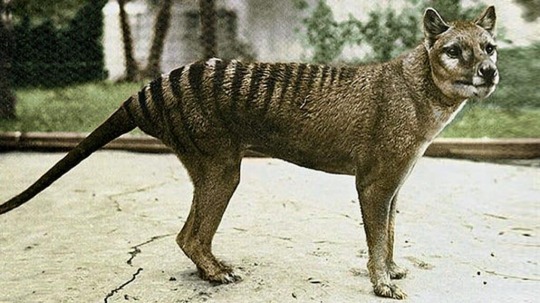
This art may be used for educational purposes, with credit, but please contact me first for permission before using my art. I would like to know where and how it is being used. If you don’t have something to add that was not already addressed in this caption, please do not repost this art. Thank you!
#Thylacinus cynocephalus#thylacinus#thylacine#tasmanian tiger#tasmanian wolf#marsupials#mammals#synapsids#Australia#Tasmania#Pleistocene#Holocene
16 notes
·
View notes
Text
Thylacinus cynocephalus

4 notes
·
View notes
Text
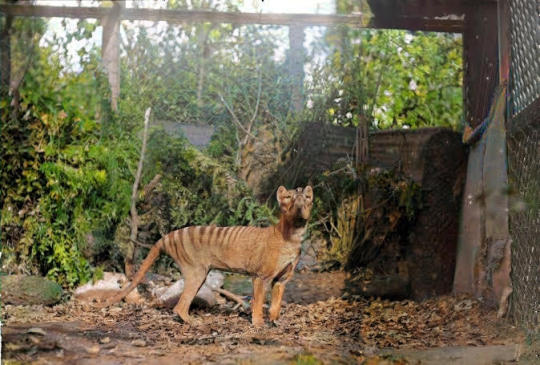
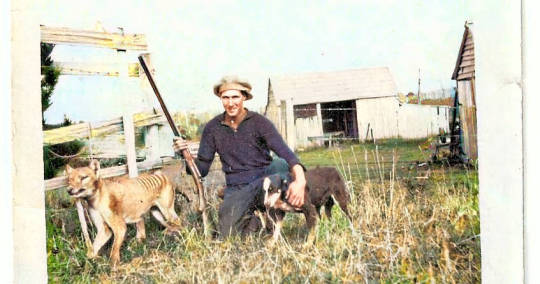
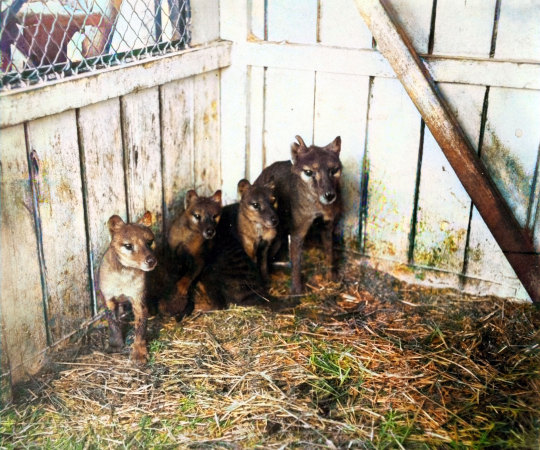
-Top pictured is one of the Burrell photographs. Which were edited to be close ups to depict a 'thylacine in the wild' later debunked to be a captive thylacine.
-Middle pictured is the Wilfred batty thylacine which is the last recorded thylacine shot in the wild.
-Bottom pictured is the Beaumaris zoo family group.
#thylacine#tasmanian tiger#thylacinus#thylacinus cynocephalus#historic photo#extinct#extinct species#marsupial#Restoration
2K notes
·
View notes
Text
lol sorry
sorry to my mutuals for all the thylacine content; I'm secretly a cryptozoologist at heart
6 notes
·
View notes
Text

The Thylacine (Thylacinus cynocephalus) | Joseph Wolf | Zoological sketches v.1 (1861) | Biodiversity Heritage Library | Flickr | Public domain
1 note
·
View note
Text





I took a four week intensive on Scientific Illustration over the summer, and these are what I consider my best work. It was a very interesting experience and I don't think I've learned so much in that short of a period before.
Specimens:
Thylacine Thylacinus cynocephalus: Copy of WAM 13.2.16
Red Kangaroo Osphranter rufus: FUR 272
Euowenia grata: FU 2671
References:
Camens, A. and Wells, R. (2009) ‘Diprotodontid footprints from the Pliocene of Central Australia’, Journal of Vertebrate Paleontology, 29(3), pp. 863–869. Available at: https://doi.org/10.1671/039.029.0316.
Camens, A.B. and Wells, R.T. (2010) ‘Palaeobiology of Euowenia grata (Marsupialia: Diprotodontinae) and its Presence in Northern South Australia’, Journal of Mammalian Evolution, 17(1), pp. 3–19. Available at: https://doi.org/10.1007/s10914-009-9121-2.
#joeycbang art#scientific illustration#paleoblr#paleoart#orthographic projection#extinct species#extant species#thylacinus cynocephalus#thylacine#osphranter rufus#red kangaroo#euowenia grata#diprotodontidae#diprodontia#marsupials#megafauna#australian megafauna#australian fauna#id in alt text#so yea this is why i haven't had any art for my main in a bit. i've been a busy boy#yes i made ANOTHER blog for this i'm blogs georg
58 notes
·
View notes
Text
On this day in 1936, the last known thylacine (Thylacinus cynocephalus) died at the Hobart Zoo in Tasmania. The animal’s passing marked the extinction of its species. Also known as the “Tasmanian wolf,” the thylacine was Australia’s largest marsupial predator. It sported a dog-like form, with distinctive stripes, and a jaw that could open up to 80 degrees—one of the largest gapes of any mammal.
The thylacine fed primarily on small mammals and birds. Nocturnal and shy, it was seldom seen by humans. However, beginning in the 19th century, settlers believed the animals threatened their livestock and, spurred on by a bounty offered by the government, hunted them relentlessly. Attempts at protecting the species in the wild came too late: Despite numerous unconfirmed reports of sightings in recent decades, no definitive sightings have occurred since the 1930s.
#science#museum#nature#natural history#animals#fact of the day#did you know#thylacine#extinction#animal facts#cool animals#australia#tasmania#museum collections#conservation#on this day#amnh#on this date
4K notes
·
View notes